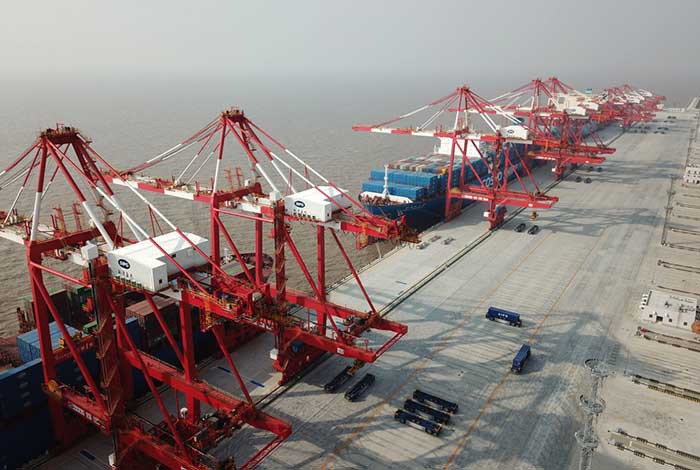How Shanghai’s Yangshan port can run without humans

Shanghai's Yangshan deep-water port (4th phase). [Photo/ beijingreview.com.cn]
Shanghai's Yangshan deep-water port (4th phase) was put into operation on Dec 10, making it the largest smart container wharf in the world.
The port, the world's busiest, is capable of handling a staggering number of sea containers every day without the need for any human intervention, thanks to its use of Automated Guided Vehicles (AGV) and robots equipped with artificial intelligence.
AGVs are robots that are able to follow markers or wires on the ground, or use their own vision, magnets, or lasers for navigation. They are mostly used to move materials around manufacturing facilities or warehouses.
One of AGV's biggest advantages is that they can be equipped with a smart control system which is able to quickly work out optimal routes and alter directions when congestion occurs.
They can work continuously for eight hours straight without the need for rest while consuming low electricity, thanks to high-capacity lithium batteries. When the batteries run low, the vehicle management system will divert the AGV to a charging station. The whole process takes only six minutes and all are done without human intervention.
The process of transporting containers from freighter to the storehouse involves several steps, each carried out by a robot with the corresponding function.
For example, one robot is responsible for lifting the cargo from the freighter. The next one receives the freight and transports it to an appointed storehouse. Lastly, the third one takes care of the storage and management of the cargo.
 Contact Us
Contact Us

 Brilliant light show to illuminate Huangpu River
Brilliant light show to illuminate Huangpu River Maple leaves paint splendid scenery in Pudong
Maple leaves paint splendid scenery in Pudong Appreciate alluring lotus blossoms in Pudong's Century Park
Appreciate alluring lotus blossoms in Pudong's Century Park New pedestrian street boosts Pudong's night economy
New pedestrian street boosts Pudong's night economy 


